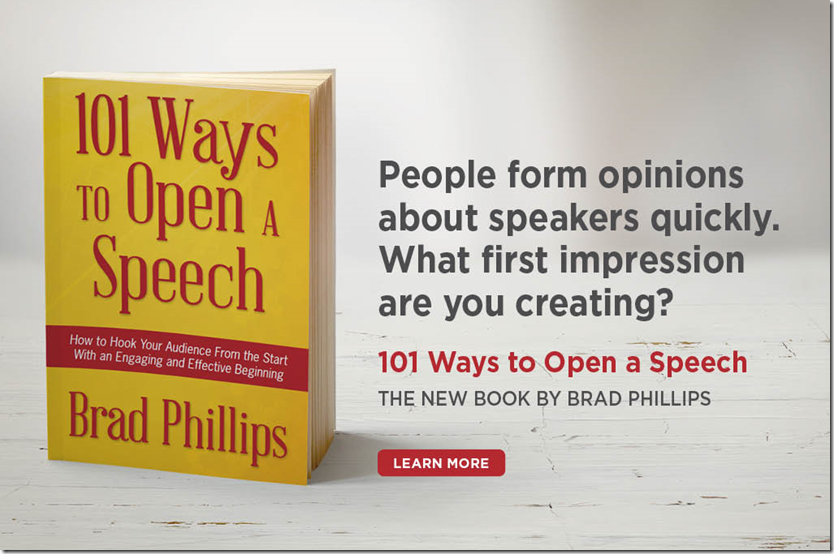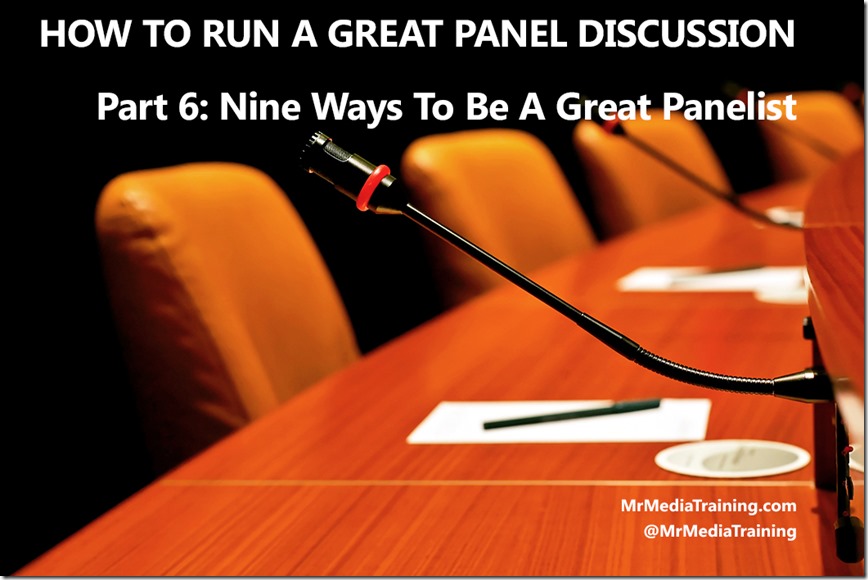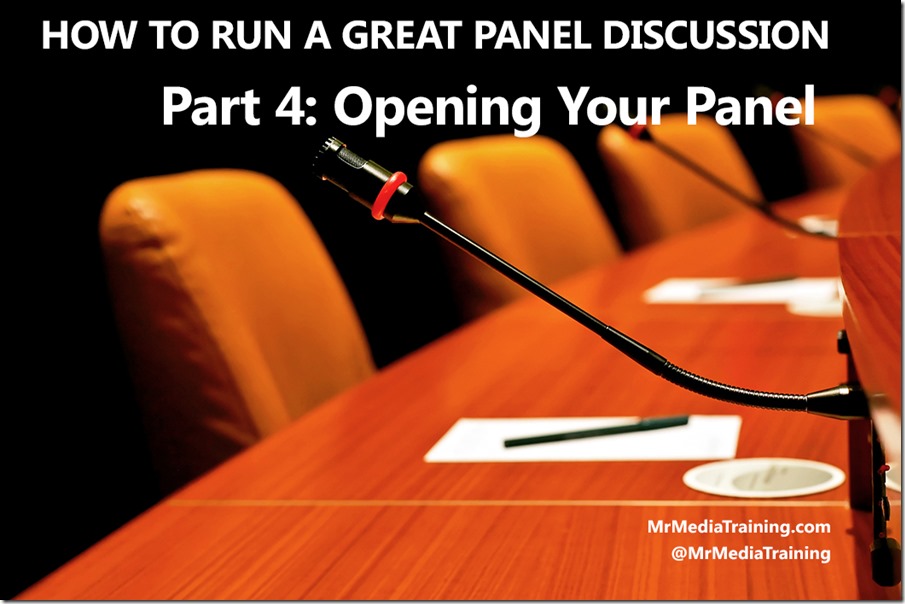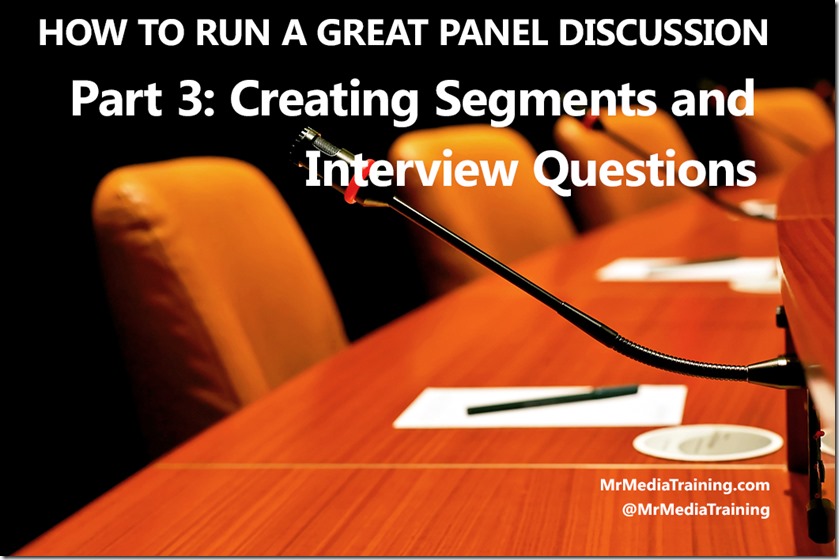Nine Ways To Be An Exceptional Interviewer
This is the fifth post of a six-part series that will teach you how to plan and deliver outstanding panel presentations. Click here to see all six parts.
A moderator’s job is to allow their panelists to shine. While some arbitrary guidelines exist for how much time they should talk as compared to their panelists — some coaches recommend a 90/10 or 80/20 panelist-to-moderator split — the best recommendation is to remain mindful that your primary role is less to be a star than to create them.
The following nine tips will help you guide a conversation that allows the most interesting tidbits to emerge.
1. Choose the right first question to set the mood.
You can begin the panel with an open-ended “scene-setting” question, which often results in longer answers that provide a useful overview of the topic, or a closed-ended question, which helps narrow the focus of the topic from the start and lends an immediate burst of energy. Either can work well.
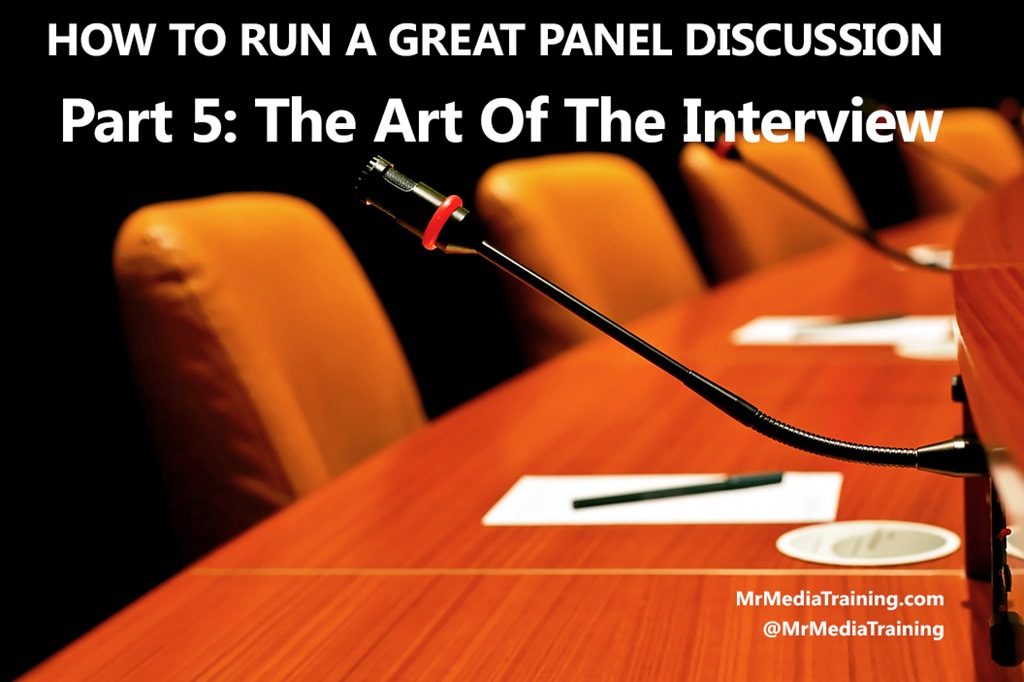
2. Ask questions in a different order.
Instead of asking questions to your panelists in a predictable order, vary the sequence throughout the panel to prevent an obvious pattern from forming. For one question, ask all of your panelists to respond. For the next, ask one person to respond and another to react to that answer. For another, ask a question to just one person and then direct a new question to a different panelist.
You can ask a roughly equal number of questions to each panelist. If one is offering longer answers than the others, you might balance the total talk time by throwing an extra question or two to the panelists giving shorter answers.
3. Be a time cop.
Little weighs down a panel more than a panelist who consistently gives five-minute answers. Don’t be afraid to move the conversation along. When an answer hits the 60- or 90-second mark, consider jumping in by saying something like:
“John, that’s a key point, and I’d like Sophie to add to what you just said. Sophie, have you faced the same challenges as John, and if so, what additional strategies did you use to deal with them?”
4. Ask good follow-up questions.
When I started in journalism, an experienced producer shared a tale with me about a young reporter who had carefully prepared a list of questions for his first big interview with a local politician. When the interview began, he asked the politician where he was born. The guilt-ridden politician suddenly — and quite unexpectedly — blurted out his confession to a sensational crime. The nervous reporter, who was intensely focused on his list of questions, barely registered what the politician had said and simply moved onto his next question: “And where did you go to school?”
The point of the producer’s story was clear: Interviewers can’t simply go down a list of questions, but must listen carefully to their subject’s responses to form meaningful follow-ups.
Your goal is to retain the flexibility to pursue a fascinating, if slightly off-topic, comment uttered by one of the panelists while also making sure the panel satisfactorily addresses the topics listed in the session description.
Here are a few techniques to ask follow-up questions that result in interesting responses:
- Play back a key word or phrase: If a panelist says, “I found that meeting with our firm’s Chief Financial Officer terrifying,” you can follow up by saying, “What was so terrifying?”
- Advance the plot: When a panelist tells part of a story, encourage them to continue. If a panelist shares a story about the struggle they faced to open their business, you could ask them to continue: “Once you finally opened your business, what happened?”
- Pull them out of the weeds: If a panelist is being too specific, ask them to share the larger significance of their point or how it connects to the big picture.
- Pull them out of the clouds: If a panelist is being too abstract, push them for specifics. Ask for examples, case studies, or anecdotes that illustrate the larger point.

5. Be provocative.
This is more appropriate for some moderators and panels than others — but being provocative can liven up a panel and yield interesting answers. As examples:
“Jackie, when we chatted before this panel began, you said that you thought Greg’s policy proposal didn’t go far enough. Where do you think he stops too short?”
“Mark, three years ago, you said you expected the stock market would reach record highs. Clearly, that hasn’t happened. What did you get wrong?”
6. Make meaningful transitions.
Less experienced moderators frequently use choppy transitions. After a panelist finishes making a point, they might say something like, “Makes sense,” or “Okay, great,” or “Got it” — and then ask a different question to a different person. Instead, use transitions that connect a panelist’s answer to your next question by finding the logical connective tissue between the two. If you’re interviewing two retired baseball stars — one of whom played in a World Series and the other one didn’t — you might ask:
“James just mentioned that playing in the World Series was the highlight of his career. You had great success and played in four All-Star Games, but never quite made it to the final round. What was your highlight?”
7. Involve the audience.
Most panels reserve time at the end for audience questions — but there are often opportunities to involve your audience sooner. If you’ve divided the panel’s topics into several segments, you might take a few questions after each one, which allows panelists to respond to questions while each topic is still fresh rather than forcing the audience to wait until the end.
A few other ideas:
- You can ask a diagnostic show-of-hands question early in the panel to better understand what your audience knows, feels, or thinks — and then connect the response to the next question you ask a panelist.
- You can ask for an audience member to personalize something a panelist said with their own experiences.
- You can also be playful. If you ask the crowd “How many of you believe salespeople are dishonest?” and 80 percent of your audience agrees, turn to a panelist and say, “Give me one reason they’re wrong.”
8. Limit your use of visuals.
Many panels don’t include PowerPoint or other visuals — that’s often the wisest choice — but there are times when visuals can play a useful supporting role. You might show the audience a chart featuring a surprising trend and have the panelists react to it. If you’re discussing an emotional issue such as a refugee crisis, you could show a few photos or a short video clip to help the audience forge a stronger emotional connection to real people whose lives are in jeopardy.
9. Close with a bang.
At the end of the Q&A period, take back the floor after the final audience question to ask a final question of your own. Closed-ended, forward-looking questions often work well here:
Are you optimistic or pessimistic about the future of our business?
What single factor will have the greatest impact on our industry over the next year?
What under-the-radar innovation do you expect to become a much bigger story between now and the time we meet three years from now?
Did you miss the first five parts of our “How To Run A Great Panel Discussion” series? Click here to read them all!
